Two dunlin
Photo credit: @sjnewton
Common Redstart
Photo credit: @EugeneDH_Bass
Two dunlin
Photo credit: @sjnewton
Cool northerly winds slowed the arrival of the Wetland's summer visitors but by the end of the month common tern, swift, reed warbler, common & lesser whitethroat were in residence. Garden warbler and cuckoo were also seen to raise hopes they, too, might breed on or around the site. The first red-legged partridge for two years was the oddity of the month which also saw the second woodcock and marsh harrier of the year. The 19 additions take the year list so far to an above average 120. This is seven more than last year and the same total as in 2021.
Two yellow wagtails
Photo credit: @wheresrhys
A pair of barnacle geese continued to show every sign of nesting again on the big island on No 5. shoveler numbers dwindled throughout the month, as expected, with the last record on the 23rd but a couple of common teal remained into May. So did the smart drake scaup which first arrived in early January and showed no sign of wanting to leave. East Warwick was its favourite haunt this month although it did continue to make occasional forays across the site.
Scaup
Photo credit: @AMP
The last red-legged partridge in Spring 2021 became so familiar with the Wetlands that it would run under the rail bridge to move between East and West Warwick. But sadly the bird found by LB on High Maynard on the 3rd vanished straight away. A count found 27 occupied grey heron nests which is one down on last year but less than half the number as recently as 2010.
After no records at all in 2022, DDL and MA found the second marsh harrier of the year drifting north on the 9th. Single red kites were seen on the 8th, 9th, 13th and 17th with two on the 7th while buzzards were recorded on seven days with two on the 9th.
Curlew
Photo credit: @Callahanbirder
The disappointing year for waders continued with the high water level in the reservoirs providing little encouragement for birds to stop. Like last year, little ringed plovers were scarce with only three single records this month. Whimbrel is an expected April bird with two on the 21st and a third on the 28th while the 4th also saw three curlew flying over. Dunlin should be one of the more regular waders but the only record so far was of two on the 28th on Lockwood where CF found the second woodcock of the year on the 17th.
Common sandpiper passage has been particularly poor. The first of the year arrived on the 1st and stayed four days but there was another gap before the second turned up on the 10th. Records were then almost daily but usually just of single birds. The maximum count was five on the 28th compared to last year's peak of seven and nine in 2021. At least one green sandpipers was seen on the 17th and 23rd with two together on the 21st while the only common redshank was a bird heard on the 26th.
While wader passage was poor, it was a good month for gulls. March's immature kittiwake stayed on East Warwick until the 8th. Unlike last year when there was only one record of little gull, there was a small passage this month with a 1W on the 19th and three adults on the 20th making brief stops on Lockwood. Two more adults were seen on the 24th on West Warwick, one of which hung around giving great views until the next day. April is also a likely month for mediterranean gulls passing with two adults over on the 19th, three more next day and another two on the 28th.
Two Mediterranean Gulls
Photo credit: @Callahanbirder
The first common tern of the year was a single on the 3rd, ten days earlier than last year, but after hanging around until the 6th, it moved on. Six more arrived after heavy rain on the 10th but it was another ten days before the Wetlands' breeding birds arrived. Arctic tern is another April speciality and at least four were seen on the 25th - exactly the same date as the first last year - on a day when parties of terns were moving through with two more next day.
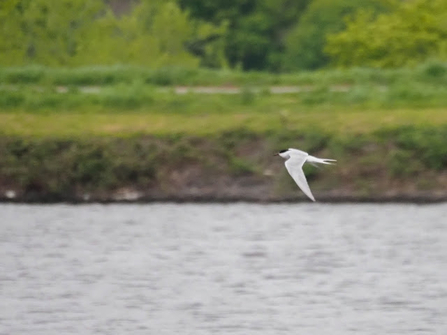
Artic tern
Photo credit: @Elliott81758817
After a long period when cuckoo was a real rarity at the Wetlands, the species is happily becoming more regular with a silent bird found on the south side by CF on the 28th. Rook remains very uncommon at the Wetlands and the singles seen on the 9th on the No 5 island by RE and over Lockwood on the 12th by SN may be the only bona fide records of the year.
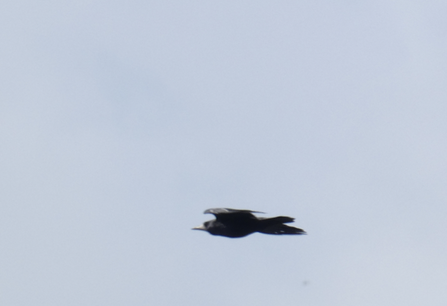
Rook
Photo credit: @wheresrhys
The first swift, like the first Wheatear, is eagerly awaited. This year there was a mass arrival with 12 birds appearing together on the 20th, five days ahead of last year, with 20 next day. Sand martins had arrived in good numbers by the end of the month with house martins from the filter beds colony also feeding over the reservoirs, They were joined by a steady trickle of swallows moving through. A Wetlands rarity was a coal tit - the second of the year - singing at the top end of High Maynard on 9th.
Overall, warblers were earlier than last year although often in very small numbers until late in the month. The first sedge warblers on the 8th, reed warbler and common whitethroat on the 11th and lesser whitethroat on the 25th were all amazingly three days earlier than in 2022. A Garden Warbler was singing on the 29th while last year the first was not heard or seen until June. Compared to last year when there were only records on five days all Spring, there was a strong and prolonged passage of willow warblers. They could be heard most days until the 26th with at least five singing on the 4th.
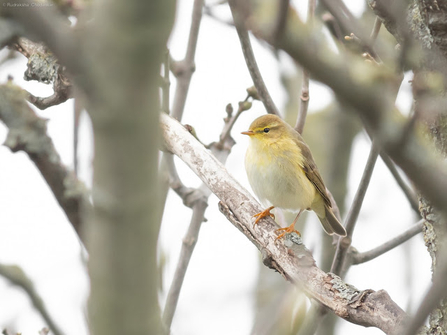
Willow warbler
Photo credit: @rudrasksh9
The final redwing of the winter was seen on the 7th and last fieldfare on the 5th. In a nice changing of the seasons, the 5th was also the first of an unprecedented number of common redstarts - a species usually seen a couple of times a year - at the Wetlands. The first superb male was found by JB along the side of Low Maynard where it stayed, although often surprisingly hard to see, in a small group of bushes for five days. A female showed itself far more briefly and typically on the 7th before a second male was found between the Warwicks next day. Another male was seen near the Engine House on the 18th with the fourth male - and fifth bird - in the same area on the 29th.
Redstart
Photo credit: @HarringayBirder
It was also a good month for wheatear passage with records almost daily after the 2nd with peak counts of at least eight on the 10th and ten-plus on the 23rd compared to a highest count of just six last year. The only stonechat was a late bird on the 2nd while the first whinchats were two stunning males on the 24th - nine days later than the earliest last year. One male stayed on Lockwood until next day in a small party of Wheatears, with a female briefly on the 26th.
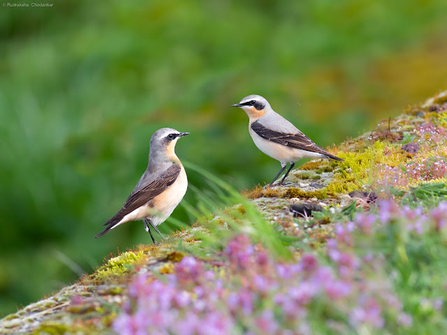
Two wheatears
Photo credit: @Chris_Farthing
Yellow wagtails are another beautiful migrant whose sightings at the Wetlands - as elsewhere - are sadly falling. The first was seen on the early date of the 9th, two weeks ahead of last year. After a wait of ten days, there were sightings on another six dates but the highest count was just three on the 27th.
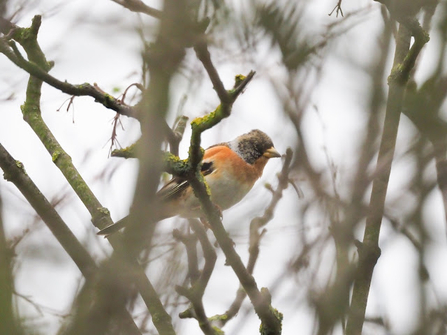
Brambling
Photo credit: @Elliott81758817
Brambling were the definition of elusive this month. After going missing for a few days, what was thought to be March's smart male was re-found on the 1st. Two males were then seen briefly on the 12th, on the 16th and next day with the final sighting of one bird on the 19th. Siskin were equally flighty with one on the 4th and two on the 8th in the alders before disappearing.
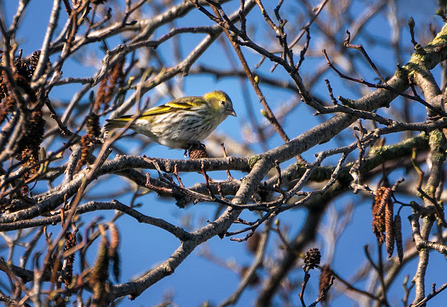
Siskin
Photo credit: @ AMP
DB @porthkillier

Thank you to Leica Sports Optics for supporting our activities at Walthamstow Wetlands
Instagram: leicanature
Facebook: Leica.Sport.Optics
Twitter: LeicaBirding